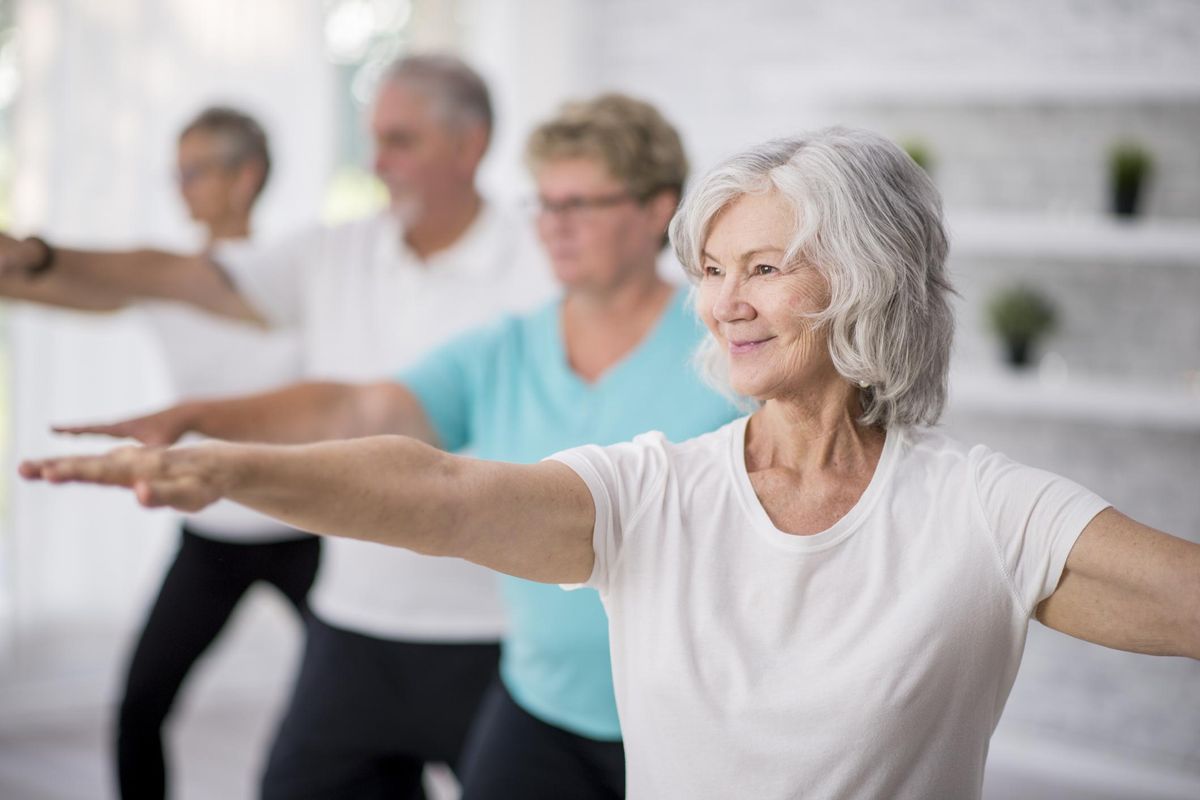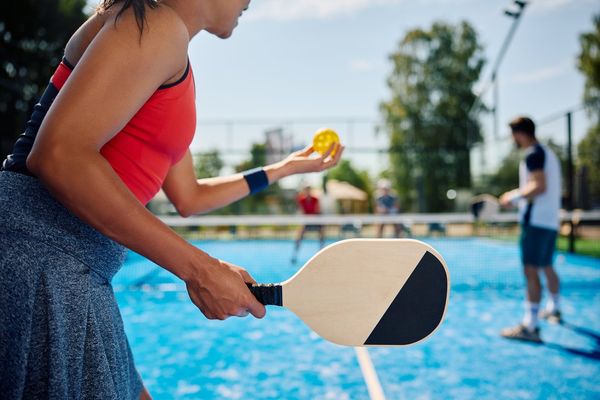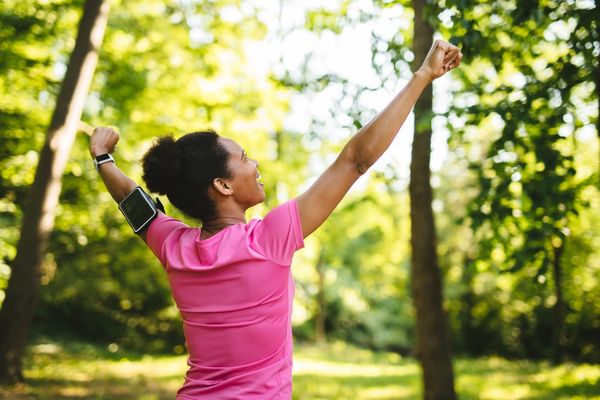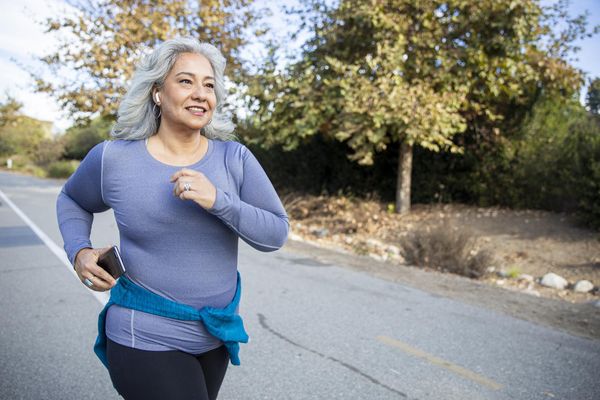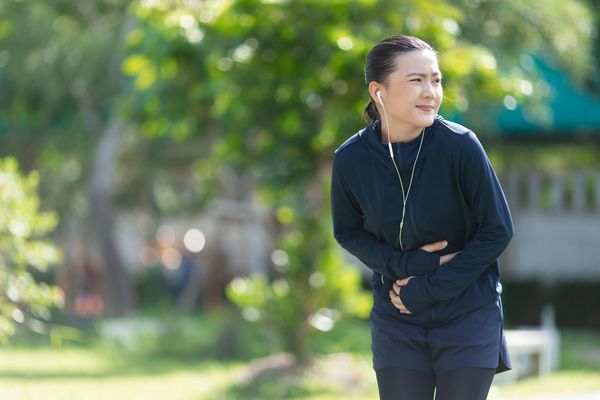Can you stand on one foot for 30 seconds without falling? Or walk heel-to-toe with your eyes closed?
Your physical activity routine might be focused on losing weight or building cardiovascular health (or both), but it's also important to spend a little time developing your balance and stability.
You may think you're already doing that by taking exercise walks or working out at the gym. Indeed, one study of postmenopausal women showed that those who were regular brisk walkers had better postural stability than women who weren't regular walkers. But building overall good balance takes specific training, which is important for preventing the falls that can lead to debilitating injuries such as hip or wrist fractures.
To get that training, don't just rush out and buy a balance board or giant stability ball, says Ryan Overturf, BS, Assistant Director of Professional Training at TELOS Fitness Center in Dallas (ACSM, CIAR, MATT, PTPT) and Certifying Instructor for the Cooper Institute for Aerobics Research. You need to first develop your balance on flat, non-moving (static) surfaces before advancing to moving (dynamic) ones.
Brain training for balance
How do you develop stability on purpose? "You're talking about muscle strengthening, but you're also talking about brain training," says Cynthia Trowbridge, PhD, Assistant Professor of Kinesiology at the University of Texas, Arlington.
For secure balance, she says, you must develop good corrective responses to "information coming from your environment, whether that's (through) vision or the sensation under your feet." And you need to anticipate what your body's responses should be.
In that way, says Dr. Trowbridge, who is also a certified athletic trainer (ATC) and certified strength and conditioning specialist (CSCS), "you challenge your stability by cueing your muscles to help maintain your balance and positioning. Walking outdoors on a rough gravel path or grass surface would challenge you more than walking around on the kitchen floor or using a stationary bike."
To teach your brain to react and control balance better, she advises putting yourself "in safe, unstable positions." A good example is standing on one leg, with something nearby to grab onto if you start to wobble. Or stand on both feet, but on a foam pad or couch cushion. These experiences help your brain learn to respond to the changed information your body is receiving.
Dr. Trowbridge suggests this "brain training" to build stability:
- Stand on an even surface, with a sofa, chair or dance bar within reach.
- Lift one leg and place it on the inside of your calf, or let it hang by your side.
- Hold both arms out for balance.
- Hold the position for 10 seconds. Repeat 3 to 5 times. When you can do that easily, increase your hold time to 20 seconds and, eventually, 30 seconds
- Remember to exhale and inhale during the exercise. Do not hold your breath.
- To add to the challenge, lower your arms to your side or criss-cross your chest (right hand to left shoulder, left hand to right shoulder).
- Timesaver tip: Try this stand while in the grocery store line (with the cart as a grab bar) or while talking on the phone.
Building strength in your trunk
Maybe you've been working on getting stronger arms or legs, but for stability you also need to strengthen the muscles in your core, or trunk. Those include your abdominals, lower back, shoulder, hip and gluteal muscles.
That means resistance or weight training, using your body's weight to begin with and then moving on to equipment such as exercise bands and free weights. Machine weights are good for other things, Dr. Trowbridge says, but not for building balance. "What machine weights do is they put you in a false stability. Our accidents don't happen when we're sitting in a chair," she says.
Simple yoga positions are good for developing your core, Dr. Trowbridge adds. Research has also shown that even just four weeks of Tai Chi, a Chinese exercise form that uses controlled movements and weight shifting, improves balance in older people.
Mr. Overturf recommends these exercises for building stability:
Body Weight Squat
- Stand with your feet just wider than your shoulders and angled out slightly.
Your shoulders should be back, with head and spine in good posture. Bend knees and hips slightly with the upper body leaning forward slightly.
Inhale. Slowly push your hips back and lower your body until you can no longer maintain proper posture.
Pause, exhale. Stand up slowly
One-Leg Hip Abduction
- Strap exercise tubing to the ankle of one foot. Stand on a small step or floor with the opposite foot.
- Place the leg with the tubing slightly in front of the other leg. Use the opposite hand to hold onto something for balance.
- Exhale and slowly pull the leg across and out about 30 degrees from the body maintaining good posture.
- Pause, then slowly bring the leg back to the starting position.
Other tips on improving your balance
- Stability training takes only a few minutes and can be part of your regular exercise routine. Work it into your warm-up or cool-down periods.
- Once you've succeeded with static (non-moving) exercises, try walking heel to toe on an imaginary line, like a tightrope. Dr. Trowbridge says you should watch your feet until your stability improves. Then try it looking straight forward and continue to practice until you can walk with your eyes closed.
- If you're not fit, just sit in a chair and lift your feet up, holding your arms out to your sides. Try to contract your muscles so you stabilize yourself in a static position.
- Reduce the amount of time you spend in flip-flops, high heels or any non heel strap shoe, Mr. Overturf advises. Such footwear, over time can lead to improper foot and lower leg mechanics that can affect balance and stability.
- 2-Minute Workouts: Exercises Even You Can Find Time For ›
- 3 Easy Strength-Training Exercises - HealthyWomen ›
- The Only Upper Body Exercises You'll Ever Need - HealthyWomen ›

